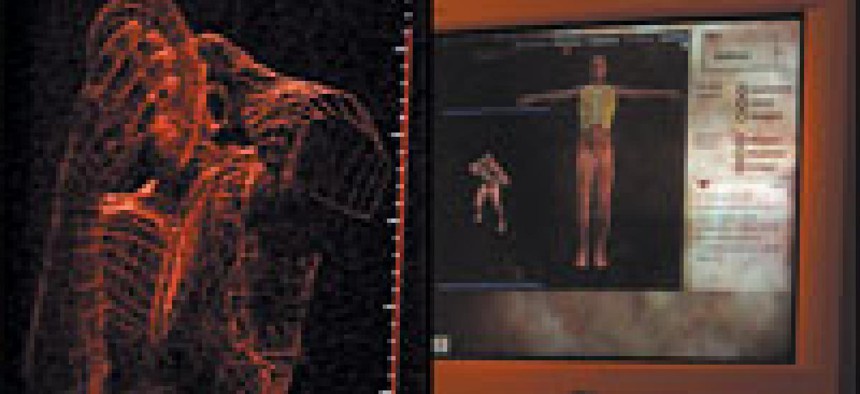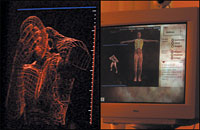New technologies fortify antiterrorism efforts


Connecting state and local government leaders
The Defense Department is pursuing various IT applications on the home front to further aid medical and emergency efforts both on and off the battlefield.

The Navy uses software from C2 Technologies to train personnel to identify and treat biowarfare attacks.
'The ability to perform the mission is highly reliant on effective communication and control. That is a part of modern warfare,' said Phil Dixon, regional sales manager for defense and intelligence at BMC Software Inc. of Houston. Dixon is a former Air Force intelligence officer now in the Reserves.
You, too?
During the Gulf War, physicians relied on paper documents to record a patient's ailments and vital signs. But the paper system didn't let physicians track other service members who showed the same symptoms.
'There was no baseline to compare it, to do any diagnostic analysis,' said Larry Albert, the senior vice president of the health care practice for Integic Corp. of Chantilly, Va.
Integic designed the Composite Healthcare System II, which is now used in four military hospitals and is scheduled for worldwide rollout by mid-2002, Albert said.
The database migrates old computerized records on dozens of legacy systems into one system that will be available to thousands of military hospitals serving 8 million active duty personnel, dependents and retirees. The Oracle database uses the Clinical Information System developed by 3M Corp. of St. Paul, Minn. The database also runs ad hoc report writing software developed by Business Objects of San Jose, Calif.
The system lets doctors see the treatment a patient has received in the past and check possible drug allergies. It can also schedule appointments.
Medic, alert
Within the next three months, the theater module of CHCS II will be ready for deployment in Afghanistan. Integic is working with officers at Fort Detrick, Md., to see if the Army can set up the system at small, mobile hospitals so it can be used to help treat troops on the spot, Albert said.
What's next is extending the module's capabilities to personal digital assistants, with which a medic in a foxhole could begin treatment of an injured soldier, Albert said.
Meanwhile, the Navy is preparing its medical staff to address the threat of bioterrorism.
Recently, the Navy received an interactive CD-ROM set on chemical, biological and radiological threats. The software was developed by C2 Technologies of Falls Church, Va., for the Naval School of Health Sciences in Bethesda, Md. It teaches doctors to distinguish about 40 separate agents that could be used in biowarfare, such as anthrax, smallpox or malaria.
[IMGCAP(1)]The program also takes doctors through video scenarios in which they are given a patient's symptoms and must determine, by conducting various exams and examining vital signs, what biological agent the patient has been hit with.
'This is more to take training ahead of time. The idea is for the Navy to take this on a ship on the way over to wherever we're fighting,' said Curtis Cox, president of C2 Technologies.
The Naval School of Health Sciences bought the software before Sept. 11. It has been rolled out to all Navy hospitals, large medical clinics and operational units, a spokesperson from the school said.
The Navy is considering the best way to offer the information to the public.
'We realize that there is a need for this product by the public,' said the spokesperson, who declined to be identified. 'We are exploring various options for this availability, which includes training through a third-party Web site and via the National Audio-Visual Center. We are looking for the most efficient means.'
Bioterrorism threats that have surfaced domestically prompted Army officials to roll out an installation crisis support system last month. The system is designed to help commanders mobilize in the event of an emergency by providing documents, links and medical site information, according to Col. Jane Maliszewski, director for strategic outreach in the Army's CIO office.
'In a crisis, it's hard to find where to go to get this information,' she said.
NEXT STORY: DOD calls for reinforcements




